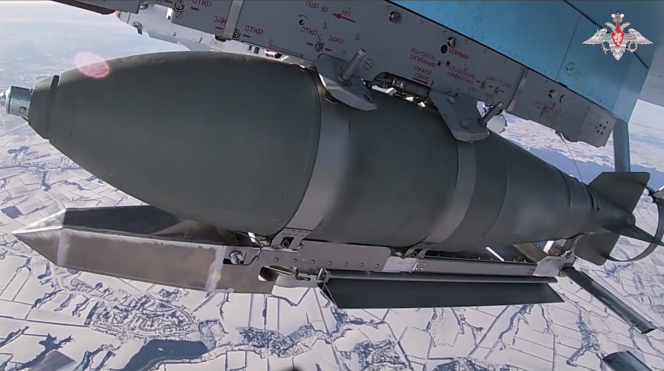


"These bombs completely destroy any position. All buildings and structures simply turn into a pit after the arrival of just one KAB. And they drop 60-80 pieces on us in one day (!!) Just imagine the conditions under which our fighters are fighting here today," wrote Egor Sugar, one of the Ukrainian defenders of Avdiivka, on X, on February 16, a few hours before retreating with his comrades.
The next day, after four months of siege and bombardment of unprecedented intensity, the Russian forces moved into what had become a field of ruins. But the capture of this town in Donetsk oblast, which could open the way to the major cities of Kramatorsk and Sloviansk, was one of their most striking victories.
The so-called "glide bombs," referred to by Sugar as KAB, played a decisive role in this battle, and have since continued to sow such terror in the Ukrainian trenches that many observers see them as the weapon most likely to tip the balance in Moscow's favor after months of immobility. The Russian army is now dropping them in large numbers on Chassiv Yar, one of the last ramparts on the road to Kramatorsk.
Their destructive power, combined with the Russians' numerical superiority, will probably enable Russian troops to break through defense lines built at great expense since the failure of the Ukrainian offensive in the summer of 2023, warned several high-ranking officers earlier this month, interviewed anonymously by the digital newspaper Politico.
Two years after the start of hostilities, the Russian army may have found a way to make a difference with these glide bombs. Its arsenal has been packed with them for decades, since they are Soviet-era "smooth bombs" known as FABs, or high-explosive bombs, also nicknamed "dumb bombs," i.e. bombs without guidance, to which have been added wings that can be unfolded after release, enabling them to glide, and a satellite control system.
The kit, called the "Unified Planning and Correction Module" (UMPK in Russian), transforms them at little cost into KABs, or trajectory-corrected aerial bombs, weapons that are both precise and devastating with their 500 to 1,500 kilograms of explosives. On March 21, Russia's Defense Minister Sergei Shoigu even unveiled a three-tonne version, six times the weight of the Franco-British Scalp-Storm Shadow missile, at a cost beyond comparison.
According to Michael Peck, of the Center for European Policy Analysis think tank, the UMPK kit, based on the American JDAM, GPS-guided bombs in service since the late 1990s, costs $20,000, to which must be added the modest cost of the bomb itself, whereas the cost of a cruise missile is in the region of $1 million.
You have 64.98% of this article left to read. The rest is for subscribers only.
